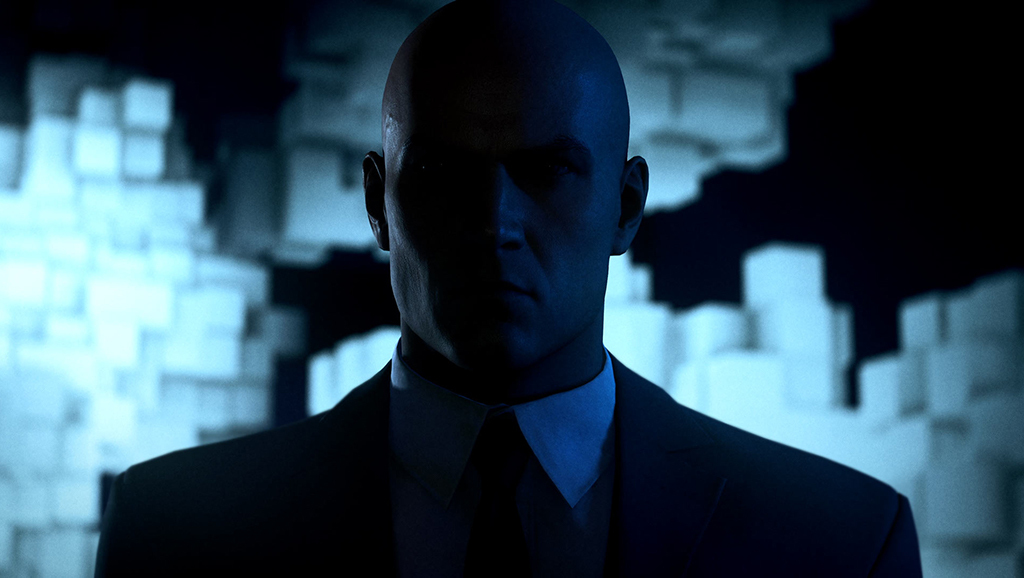IO Interactive seems to have realised that when you’ve discovered alchemy, you don’t mess with the recipe too much. Hitman 3 doesn’t innovate, but it refines and applies what drew players to this franchise in the first place.
-
Graphics
-
Story
-
Performance
While innovation is something to be praised in game creation, sometimes it’s refreshing to see developers leave it out of the equation when they have a winning formula on their hands.
This seems to have been the guiding philosophy for IO Interactive’s approach to Hitman 3; rather than try to reinvent the wheel, or plug in a whole load of unnecessary mechanics, IO has instead refined its stealth kill-box to a lethal degree. Like a fine wine, refined over several years, Hitman 3 is the best realisation of the recent trilogy on release.
The Agent is back
 To give you an idea of how little IO has tinkered with the game’s mechanics, the only major new addition to Agent 47’s arsenal in Hitman 3 is a camera, which players can use to hack certain items in their environment and gather intel. Other than that you’re looking at the usual array of death-dealing tools – silenced pistols, fibre-wire, coins and such – with the odd piece of equipment unlocked as players progress through the levels (such as a gun with a homemade silencer).
To give you an idea of how little IO has tinkered with the game’s mechanics, the only major new addition to Agent 47’s arsenal in Hitman 3 is a camera, which players can use to hack certain items in their environment and gather intel. Other than that you’re looking at the usual array of death-dealing tools – silenced pistols, fibre-wire, coins and such – with the odd piece of equipment unlocked as players progress through the levels (such as a gun with a homemade silencer).
The interface and controls remain the same as they were in the first entry in the trilogy, as does Agent 47’s stiff movement. This isn’t a criticism, mind; there’s something delightfully old school about Agent 47, from the odd imprecision to the way he stalks about his environment with a dead-eyed stare, about as inconspicuous as a uniformed policeman trying to blend in at a goth convention.
The fact that 47 stands out like a sore thumb has always been one of the series’ funnier hallmarks, particularly when he assumes the identity of NPCs that other NPCs have already met; strange that a tour guide wouldn’t notice that the bloke she spoke to five minutes ago who had a full head of hair and a paunch, has returned from the toilet all slimmed down, bald as a plucked chicken and sporting a bar-code tattoo on the back of his head. This incidentally, is after players have had the chance to make 47 DJ to an audience in a Berlin nightclub (is there anything the man can’t do?).
This general silliness extends to some part of Agent 47’s surroundings – a villain recording his memoirs and remarking on how great they sound (when they don’t) and a target complaining that his colleague is a sycophantic yes-man are a couple of highlights. But beyond the laughs to be had, this humour also encourages players to explore 47’s environments, eavesdropping on conversations to reveal intel for missions and side quests while noticing items, fixtures and fittings that could be used in eradicating his targets. A lot can be gleaned in Hitman 3 by simply standing still, listening and observing.
Killing in colourful ways
 The lion’s share of information, however, is earned through exploring the environments that 47 finds himself in, and it is here that IO Interactive deserve a thundering round of applause. The maps in Hitman 3 are arguably the best – or at least up there with the best – that the series has ever seen. Beyond their exotic settings – which include an opulent skyscraper in Dubai, a graffiti-covered rave club in an abandoned power-plant in Berlin and a neon-encrusted, rain-slicked slum in Chongqing – they’re simply bursting with possibilities. The more players spend sauntering around each location, the more intel they’ll gather, through snippets of conversation, items of interest, clocking the movements of their targets and more.
The lion’s share of information, however, is earned through exploring the environments that 47 finds himself in, and it is here that IO Interactive deserve a thundering round of applause. The maps in Hitman 3 are arguably the best – or at least up there with the best – that the series has ever seen. Beyond their exotic settings – which include an opulent skyscraper in Dubai, a graffiti-covered rave club in an abandoned power-plant in Berlin and a neon-encrusted, rain-slicked slum in Chongqing – they’re simply bursting with possibilities. The more players spend sauntering around each location, the more intel they’ll gather, through snippets of conversation, items of interest, clocking the movements of their targets and more.
The first play-through of any of Hitman 3’s missions will give the player enough info for a speed run on the second go-around. Or at the very least, encourage them to flex their creative muscles when it comes to assassinating their targets. Sure, poisoning a bloke’s drink and then drowning him in the toilet when he goes to throw up gets the job done, but using an art installation to fry a target in full view of his bodyguard or ensuring their skydiving lesson goes horribly wrong is far more satisfying. There’s even one mission set in a mansion in the English countryside where, if Agent 47 manages to dress up as private detective who was summoned to the premises, the whole mission takes on the atmosphere of an Agatha Christie-esque murder mystery.
All of this makes Hitman 3 – much like its predecessors – eminently re-playable. While there are only six maps in the game, IO encourages players to revisit them through challenges, collectables, unlockables and the chance to take a more novel approach to the business of killing than the last time the player visited them. This, in turn, extends to the game’s Contracts Mode where players are encouraged to concoct myriad scenarios for the rest of the community – provided they’ve managed to pull off the designed hit themselves first.
47’s got a story
 Much as was the case in the previous two games in this trilogy, IO has pretty much ensured that even the most squeamish player won’t feel sorry for any of Agent 47’s targets. All of them are members of an organisation called Providence, a despicable cabal of the 1% bent on global domination, with a sideline in everything from funding global terrorism to human experimentation. However, Hitman 3’s narrative brings something new to the party in the form of humanizing Agent 47 somewhat – and not in the mawkish way that was attempted in Hitman: Absolution.
Much as was the case in the previous two games in this trilogy, IO has pretty much ensured that even the most squeamish player won’t feel sorry for any of Agent 47’s targets. All of them are members of an organisation called Providence, a despicable cabal of the 1% bent on global domination, with a sideline in everything from funding global terrorism to human experimentation. However, Hitman 3’s narrative brings something new to the party in the form of humanizing Agent 47 somewhat – and not in the mawkish way that was attempted in Hitman: Absolution.
Rather than building to some big reveal that leaves players on a cliffhanger, Hitman 3’s story does a lot to unshackle and empathise with 47, giving him choices about his future, when previously none existed. In terms of the medium, it’s not exactly ground-breaking stuff, but when one considers that the Hitman franchise’s protagonist has been little more than a blank slate, for the most part, it’s touching to see the developers give 47 even the smallest semblance of optimism.
Hitman 3 Final Verdict
 Hitman 3 is missing a couple of beloved features from its predecessors, and whether this is down to time or budget (or both) is anyone’s guess. The Elusive Targets are gone, as are the multiplayer modes and Ghost mode, although the Sniper Assassin mode is a nice enough diversion (since Hitman 3 was reviewed on an Xbox One, we can’t, at least at this stage comment on the PSVR component). The final mission of the game also leaves something to be desired; it tosses the contained sandbox structure from the rest of the game in favour of a run-and-gun linear level on a train – although to be fair, further exploration may serve up its own set of rewards.
Hitman 3 is missing a couple of beloved features from its predecessors, and whether this is down to time or budget (or both) is anyone’s guess. The Elusive Targets are gone, as are the multiplayer modes and Ghost mode, although the Sniper Assassin mode is a nice enough diversion (since Hitman 3 was reviewed on an Xbox One, we can’t, at least at this stage comment on the PSVR component). The final mission of the game also leaves something to be desired; it tosses the contained sandbox structure from the rest of the game in favour of a run-and-gun linear level on a train – although to be fair, further exploration may serve up its own set of rewards.
But players who can look past these peccadillos are in for a treat. IO Interactive seems to have realised that when you’ve discovered alchemy, you don’t mess with the recipe too much. Hitman 3 doesn’t innovate, but it refines and applies what drew players to this franchise in the first place. It hones what has worked in the past to a diamond-tipped edge and while the faithful may forever argue about which entry in this franchise is ‘the best’, Hitman 3, if there is no consensus on it being ‘the best’ is certainly the number-one contender for the title.



